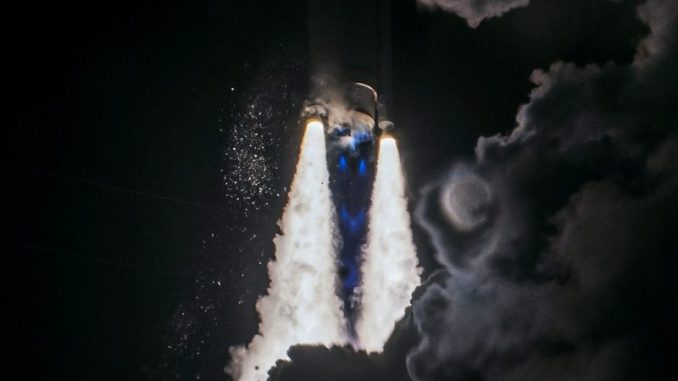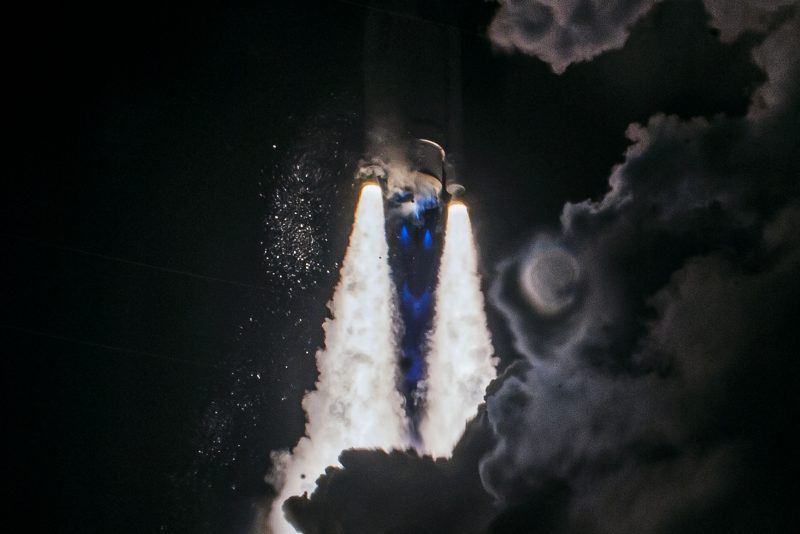

OAN’s Elizabeth Volberding
10:33 AM – Tuesday, January 9, 2024
Shortly after launching, a private company’s spacecraft experienced a “critical” fuel leak, seemingly ending the United States’ first attempt to land on the moon in over 50 years.
Advertisement
On Monday, the Peregrine lunar lander, constructed by Astrobotic, launched with the Vulcan rocket from the United Launch Alliance at 2:18 AM ET from the Cape Canaveral Space Force Station in Florida.
About an hour after launching, the Peregrine detached from the rocket and was making its way to the moon. The spacecraft was scheduled to reach the moon on February 23rd. That date would’ve marked the first United States soft moon landing mission after over 50 years.
However, shortly after takeoff, Astrobotic reported that a “propulsion anomaly” was keeping the lunar lander from pointing its solar panels in the direction of the sun, which would have allowed it to gather energy for operation. It was later determined that there was a fuel leak.
Shortly before accessing a “known period of communication outage,” the Astrobotic crew declared that it had designed and carried out a makeshift maneuver to turn Peregrine’s solar panels in the direction of the sun in order to collect sunlight.
Even though this contributed to the battery’s charge, it may not have been sufficient enough in order to enable the moon landing.
“Unfortunately, it appears the failure within the propulsion system is causing a critical loss of propellant,” Astrobotic wrote in a statement on the company’s website. “The team is working to try and stabilize this loss, but given the situation, we have prioritized maximizing the science and data we can capture. We are currently assessing what alternative mission profiles may be feasible at this time.”
National Aeronautics and Space Administration (NASA) instruments are among the 20 payloads that the lunar lander is carrying, according to Astrobotic, from seven different countries and 16 commercial clients. NASA granted approval to Astrobotic to construct commercial lunar landers, which would be utilized by the agency to launch instruments into space.
According to NASA, among the five NASA devices aboard Peregrine are those that would “study the lunar exosphere, the amount of hydrogen in the lunar soil and radiation monitoring.”
“NASA instruments aboard Peregrine will help NASA prepare for the Artemis program’s missions to enable a sustained human presence on the Moon,” Astrobotic stated.
Joel Kearns, the deputy associate administrator for exploration at NASA’s Science Mission Directorate in Washington, made a statement about Peregrine.
“Each success and setback are opportunities to learn and grow,” said Kearns, “We will use this lesson to propel our efforts to advance science, exploration, and commercial development of the moon.”
Another commercial company has the opportunity to reach the moon if Astrobotic’s lunar lander fails to make it there. The Nova-C Lunar Lander, created by Houston-based Intuitive Machines, is set to launch next month and will also transport commercial cargo and five NASA payloads. It will make an attempt to reach near the moon’s South Pole.
Stay informed! Receive breaking news blasts directly to your inbox for free. Subscribe here. https://www.oann.com/alerts

